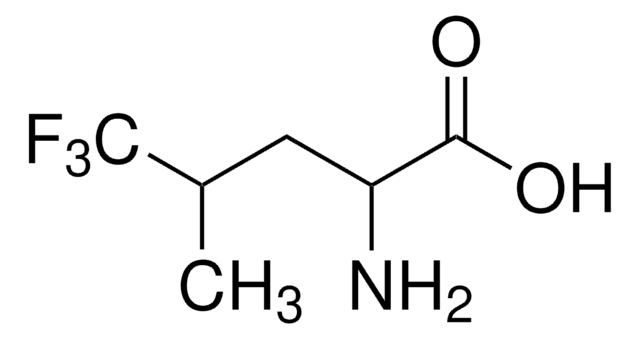If this product has an expiration or retest date, it will be shown on the Certificate of Analysis (COA, CofA). If there is no retest or expiration date listed on the product's COA, we do not have suitable stability data to determine a shelf life. For these products, the only date on the COA will be the release date; a retest, expiration, or use-by-date will not be displayed.
For all products, we recommend handling per defined conditions as printed in our product literature and website product descriptions. We recommend that products should be routinely inspected by customers to ensure they perform as expected.
For products without retest or expiration dates, our standard warranty of 1 year from the date of shipment is applicable.
For more information, please refer to the Product Dating Information document: https://www.sigmaaldrich.com/deepweb/assets/sigmaaldrich/marketing/global/documents/449/386/product-dating-information-mk.pdf
Kluczowe dokumenty
94956
Vinylcyclohexene dioxide
purum, suitable for electron microscopy, mixture of isomers, ≥96.0% (GC)
Synonim(y):
4-vinyl-1-cyclohexene diepoxide, 1,2-Epoxy-4-epoxyethylcyclohexane, 3-Epoxyethyl-7-oxabicyclo[4.1.0]heptane
Wybierz wielkość
1880,00 zł
Wybierz wielkość
About This Item
1880,00 zł
Polecane produkty
Poziom jakości
klasa czystości
purum
Próba
≥96.0% (GC)
Formularz
liquid
metody
electron microscopy: suitable
współczynnik refrakcji
n20/D 1.477 (lit.)
n20/D 1.479
bp
230-232 °C (lit.)
gęstość
1.094 g/mL at 25 °C (lit.)
ciąg SMILES
C1CC2OC2CC1C3CO3
InChI
1S/C8H12O2/c1-2-6-7(10-6)3-5(1)8-4-9-8/h5-8H,1-4H2
Klucz InChI
OECTYKWYRCHAKR-UHFFFAOYSA-N
Szukasz podobnych produktów? Odwiedź Przewodnik dotyczący porównywania produktów
Zastosowanie
produkt powiązany
Hasło ostrzegawcze
Danger
Zwroty wskazujące rodzaj zagrożenia
Zwroty wskazujące środki ostrożności
Klasyfikacja zagrożeń
Acute Tox. 3 Dermal - Acute Tox. 3 Inhalation - Acute Tox. 4 Oral - Carc. 1B - Muta. 2 - Repr. 1B
Kod klasy składowania
6.1C - Combustible acute toxic Cat.3 / toxic compounds or compounds which causing chronic effects
Klasa zagrożenia wodnego (WGK)
WGK 1
Temperatura zapłonu (°F)
224.6 °F - closed cup
Temperatura zapłonu (°C)
107 °C - closed cup
Środki ochrony indywidualnej
Eyeshields, Faceshields, Gloves, type ABEK (EN14387) respirator filter
Wykazy regulacyjne
Wykazy regulacyjne dotyczą głównie produktów chemicznych. Można w nich podawać ograniczoną liczbę informacji na temat produktów niechemicznych. Brak wpisu oznacza, że żaden ze składników nie znajduje się w wykazie. Użytkownik odpowiada za zagwarantowanie bezpiecznego i zgodnego z prawem stosowania produktu.
EU REACH Annex XVII (Restriction List)
Wybierz jedną z najnowszych wersji:
Masz już ten produkt?
Dokumenty związane z niedawno zakupionymi produktami zostały zamieszczone w Bibliotece dokumentów.
Klienci oglądali również te produkty
-
How can I determine the shelf life / expiration / retest date of this product?
1 answer-
Helpful?
-
-
How is shipping temperature determined? And how is it related to the product storage temperature?
1 answer-
Products may be shipped at a different temperature than the recommended long-term storage temperature. If the product quality is sensitive to short-term exposure to conditions other than the recommended long-term storage, it will be shipped on wet or dry-ice. If the product quality is NOT affected by short-term exposure to conditions other than the recommended long-term storage, it will be shipped at ambient temperature. As shipping routes are configured for minimum transit times, shipping at ambient temperature helps control shipping costs for our customers. For more information, please refer to the Storage and Transport Conditions document: https://www.sigmaaldrich.com/deepweb/assets/sigmaaldrich/marketing/global/documents/316/622/storage-transport-conditions-mk.pdf
Helpful?
-
-
How should VCD be stored, for short term and long term?
1 answer-
This product may be stored at room temperature for both, short and long term periods.
Helpful?
-
-
What is the concentration of VCD #94956 ( mg / ml)?
1 answer-
This product is supplied as a neat or pure liquid with a density of 1.094 g/mL and a molecular weight of 140.18 g/mol. The minimum purity is 96%, thus the molarity will vary slightly from lot to lot. The molarity can range from 7.5 M (96%) to 7.8 M (100%). The lot specific purity is reported on the Certificate of Analysis. Please see the link below to review a sample Certificate: https://www.sigmaaldrich.com/certificates/sapfs/PROD/sap/certificate_pdfs/COFA/Q14/94956-BULKBCCJ4415.pdf
Helpful?
-
-
¿En qué está disuelto este producto (94956): aceite de sesamo, Alcohol, DMSO? . Tengo que usarlo más diluido para inyectar en ratones. Gracias
1 answer-
Product 94956 is a neat liquid of Vinylcyclohexene dioxide (VCD) at room temperature. According to the following scientific article, https://www.ncbi.nlm.nih.gov/pmc/articles/PMC2703138/, VCD was either prepared for intramuscular injection with cottonseed oil, or prepared with sesame oil for intraperitoneal injection.
Helpful?
-
Active Filters
Nasz zespół naukowców ma doświadczenie we wszystkich obszarach badań, w tym w naukach przyrodniczych, materiałoznawstwie, syntezie chemicznej, chromatografii, analityce i wielu innych dziedzinach.
Skontaktuj się z zespołem ds. pomocy technicznej











